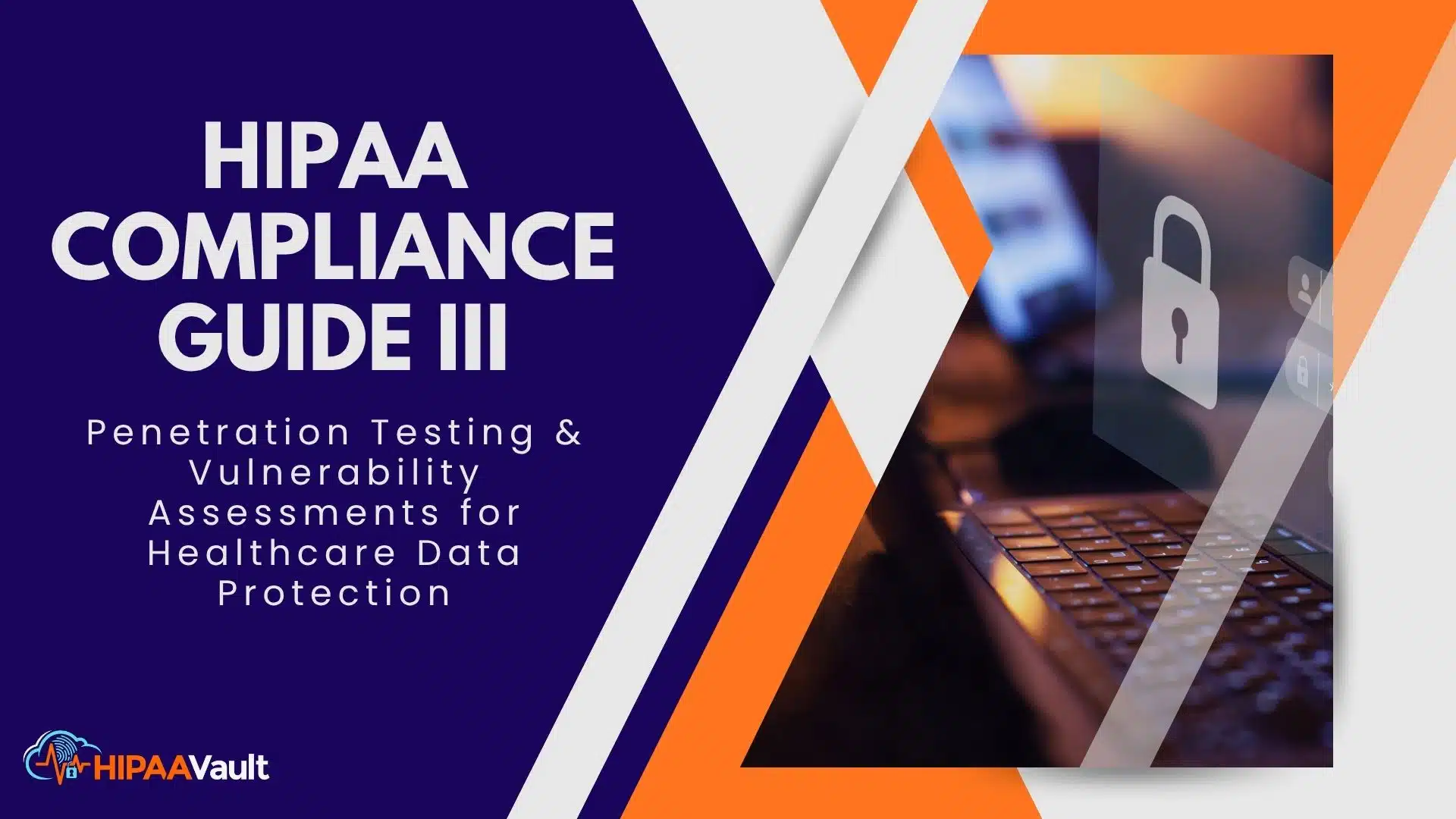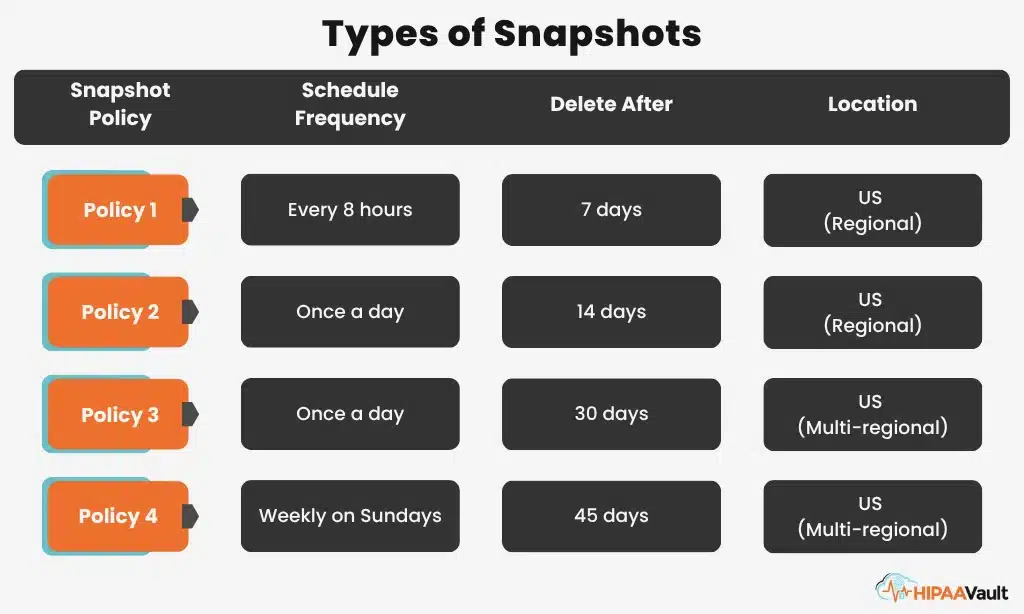How healthcare organizations can use testing and scanning to validate their security posture and protect PHI in 2025.
Penetration Testing & Vulnerability Assessments
HIPAA compliance in 2025 is no longer just about meeting minimum requirements — it’s about proving your defenses work.
Just as clinicians rely on diagnostic imaging to detect illness early, HIPAA-compliant organizations rely on penetration testing and vulnerability assessments to uncover weaknesses before they’re exploited.
According to the HIPAA Journal’s 2025 Cost of a Healthcare Data Breach report, the average healthcare breach now costs $7.42 million, remaining the most expensive of any sector. Meanwhile, the Health-ISAC 2025 Health Sector Cyber Threat Landscape Report warns of escalating ransomware, IoMT vulnerabilities, and nation-state espionage targeting hospitals and research networks.
These findings prove that checking the HIPAA box isn’t enough — continuous testing is now an operational necessity.
👉 In HIPAA Compliance Guide I, we covered the importance of BAAs.
👉 In HIPAA Compliance Guide II, we explored how to build a security-first culture.
Now, in Part III, we’ll show how to verify those safeguards through penetration testing and vulnerability assessments.
Secure Your Healthcare Operations with Full HIPAA Compliance
HIPAA Vault provides end-to-end compliance services — from secure hosting to expert risk assessments and 24/7 support.
Get a Free Compliance AssessmentWhy Testing & Scanning Are Vital for HIPAA Compliance
HIPAA’s Security Rule requires covered entities to “conduct an accurate and thorough assessment of the potential risks and vulnerabilities” to PHI.
That translates directly to testing and scanning in practice:
- Penetration Testing → simulates real attacks to find exploitable weaknesses.
- Vulnerability Assessments → identify misconfigurations, outdated software, and missing patches.
Together, they form the backbone of HIPAA’s ongoing Risk Analysis requirement (§164.308 (a)(1)(ii)).
💡 The ClearDATA 2024 Healthcare Threat Report found that healthcare cloud workloads remain a prime target for ransomware and API exploits — emphasizing the need for consistent testing and patch management.
Defining Security Incidents Under HIPAA
HIPAA defines a security incident as any attempted or successful unauthorized access, use, disclosure, modification, or destruction of PHI.
Examples include:
- Brute-force password attempts
- Phishing and credential harvesting
- Lost or stolen devices containing PHI
- Malware or ransomware infections
Even attempted intrusions qualify, so early detection through continuous vulnerability scanning is crucial.
External Penetration Testing
Penetration testing — or “pen testing” — uses ethical hackers to simulate live attacks and expose real-world weaknesses.
Benefits for HIPAA Compliance
- Validates perimeter defenses (firewalls, web apps, APIs).
- Tests incident-response workflows.
- Provides evidence of proactive risk management for auditors.
- Identifies exploitable paths to PHI before attackers do.
📊 The CISA 2024 Risk & Vulnerability Findings for Healthcare highlighted recurring issues such as outdated software, weak authentication, and inadequate segmentation — all revealed through penetration testing.
👉 At HIPAA Vault, our HIPAA-Compliant Hosting Plans include managed penetration testing and continuous monitoring to validate your environment year-round.
Internal Vulnerability Assessments
While pen testing looks outward, vulnerability assessments inspect internal networks, databases, and applications for risks.
Why They Matter
- Detect unpatched systems and insecure configurations.
- Identify outdated TLS/SSL protocols and weak access permissions.
- Highlight insecure APIs and privilege-escalation paths.
- Support Administrative and Technical Safeguards under the HIPAA Security Rule.
The NIST Cybersecurity Framework endorses ongoing vulnerability scanning as part of a mature risk-management process.
Risk Analysis & Continuous Monitoring
A HIPAA-compliant risk program is continuous, not episodic. Key components include:
- Quarterly or continuous vulnerability scans
- Annual penetration testing or after major system changes
- Documented remediation and verification steps
- Regular incident-response drills
- Executive-level summary reporting
The Health-ISAC 2025 Report specifically warns about supply-chain risk and third-party exposure, urging healthcare entities to validate vendor defenses through testing and contractual BAAs.
2025 Threat Landscape: What’s New
According to the latest Health-ISAC Threat Landscape 2025:
- Ransomware remains the top attack vector, often followed by data extortion.
- IoMT devices (wearables, infusion pumps, imaging systems) are now common entry points.
- Nation-state espionage increasingly targets health data and clinical trials.
- AI-enhanced phishing & deepfakes complicate social-engineering defenses.
Additionally, Secureframe’s 2025 Healthcare Data Breach Analysis shows the average breach dwell time in healthcare remains 279 days — far longer than other industries.
Best Practices for HIPAA-Compliant Testing & Scanning
- Perform external pen tests annually (or after major changes).
- Implement continuous internal vulnerability scanning.
- Use SIEM and centralized logging for real-time alerts.
- Prioritize patching within 30 days for critical vulnerabilities.
- Conduct employee phishing-awareness training quarterly.
- Document every test, finding, and remediation for audit evidence.
💡 Regular documentation satisfies OCR auditors and demonstrates good-faith compliance.
Choosing the Right Security Partner
When selecting a vendor:
- Require a signed BAA.
- Ensure managed testing and remediation are included.
- Verify that reports follow NIST and HIPAA standards.
- Confirm 24/7 monitoring and healthcare-specific expertise.
👉 With HIPAA Vault, every hosting plan includes:
- Signed BAA
- Pen Testing & Vulnerability Scanning
- Continuous Monitoring & Remediation
- Expert, HIPAA-certified support
Learn more about HIPAA Vault’s Hosting Solutions or contact us for a free security consultation.
Key Takeaways
- The average healthcare breach costs $7.42 million (HIPAA Journal).
- Regular testing + scanning = proven risk reduction.
- Stay aligned with HHS, NIST, and Health-ISAC guidance.
- Work with a trusted HIPAA hosting partner to maintain verified compliance.
FAQs
At HIPAA Vault, we go beyond compliance checklists.
We integrate testing, monitoring, and expert remediation into every hosting environment.
✅ Signed BAAs
✅ Managed Pen Testing & Vulnerability Scanning
✅ Continuous Monitoring & HIPAA-trained Support
👉 Protect your PHI and prove your compliance today.
Explore HIPAA Vault Hosting Plans or schedule a consultation.








